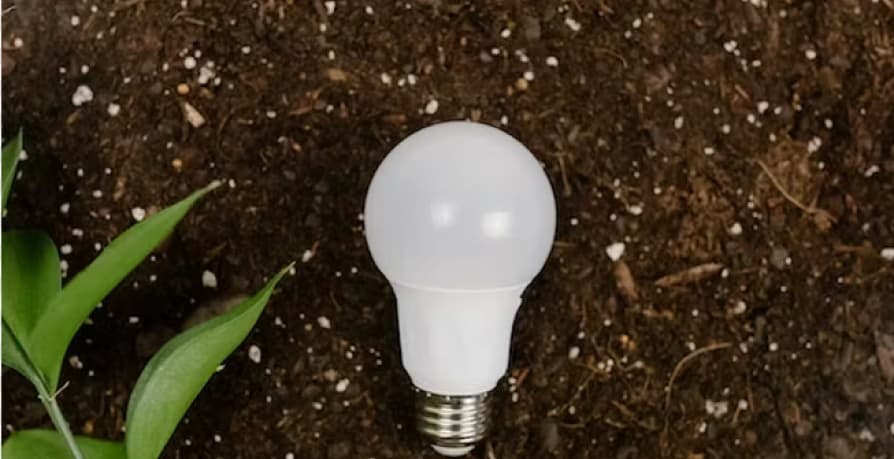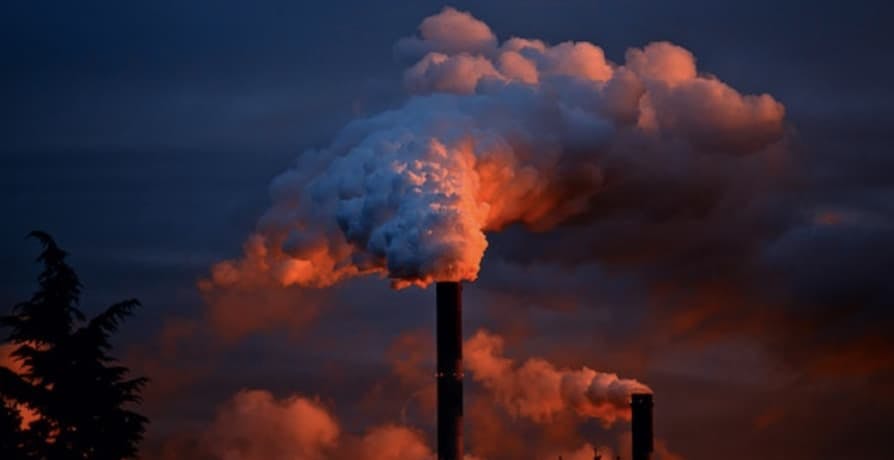
California Climate Accountability Package: SB253, SB261, & SB252
What is the California Climate Accountability Package, and how do SB 253 and SB 261 (SB 219), and SB 252 help the state work towards their environmental goals?
ESG / CSR
Industries



Global emissions are on the rise, and many nations like the U.S. are passing revolutionary bills and stronger legislation in order to mitigate carbon emissions and the negative effects of climate change. If companies can afford it, they may even install a carbon capture and storage system with bioenergy – otherwise known as BECCS.
How does bioenergy with carbon capture and storage help to reduce carbon dioxide and greenhouse gas emissions, and ultimately – reduce climate change?
Carbon capture and storage, sometimes known as CCS for short – is a method of removing carbon emissions from the atmosphere that have already been produced, or removing the emissions from the source of industrial activity.
A carbon capture and storage system can retrieve large amounts of carbon dioxide emissions already existing in the atmosphere from previous industrialization, otherwise known as the “capture”. The carbon capture and storage system can then inject the emissions retrieved deep underground so that it cannot deplete the ozone layer or harm the environment – otherwise known as the “storage”.
What has made carbon capture and storage systems so popular is that they have proven to be successful in retrieving and sequestering carbon emissions both from the air and from the source of production before they enter the atmosphere. Carbon capture and storage systems are one of the only certified technologies that are able to remove existing carbon dioxide emissions from the air, making it a viable resource in the fight against climate change.

Carbon capture and storage, otherwise known as CCS – works to remove existing carbon emissions from the air in three simple steps.
First, a carbon capture and storage system will “capture” the emissions in the air or from the source of production – think of the capture component of the system as a massive vacuum trying to clean the air of ozone depleting substances or various toxic particles that are produced alongside greenhouse gasses and excessive emissions.
While carbon capture systems can remove existing emissions, it is important to note that they mostly work to remove potential emissions from the source of high carbon emitting machinery itself. This way, carbon capture and storage systems help prevent pollution before it can even happen.
After capturing the carbon emissions, the emissions are synthesized and transported to a storage facility.
After capturing and transporting the carbon emissions, they will usually be stored permanently underground so that the carbon dioxide cannot harm the environment. Nowadays, some companies are finding innovative ways to reuse the carbon dioxide – such as in soda drinks, to deter the need to produce new carbon dioxide. Therefore, sometimes the carbon dioxide is simply stored to be reused at a later date.

Carbon capture and storage may be viewed as a way to mitigate excessive emissions, but the truth is – a carbon capture and storage system shouldn’t be the only method used to offset emissions. While a carbon capture and storage system can help to reduce emissions, it shouldn’t be used as the sole tactic for a company seeking to reduce their carbon footprint – as a carbon capture and storage system cannot reverse the already existing negative impacts of climate change, such as drastic heatwaves or the depletion of the ozone layer.
Climate change is already happening, and not even the most revolutionary technology can reverse the already existing effects that rising global temperatures have had on human life, weather, and biodiversity around the world.
Companies are encouraged to purchase and install a carbon capture and storage system if possible, however – it is costly and requires extensive energy to maintain. This makes it difficult for many companies to obtain, let alone sustain – given the funding and energy necessary to keep a carbon capture and storage system running. However, new legislation like the new U.S. climate bill is helping to incentivize businesses to purchase and install a CCS by offering them a tax reduction if they do so. In short, carbon capture and storage is certainly useful, and should be implemented if possible – but it isn’t going to suddenly help a company become carbon neutral or offset their carbon footprint.
Can bioenergy in addition to carbon capture and storage improve the positive effects of this emission reducing machinery?
Bioenergy is a kind of renewable energy that is created by burning biomass fuel. Biomass fuels are sourced from organic materials like residues from harvested crops, wood residue, and organic waste from residences, businesses, and farms.

Bioenergy is used as an alternative source of energy as an attempt to reduce the amount of fossil fuels that are used, so that more companies can achieve net-zero emissions by 2050.
This source of renewable energy is used to help mitigate the extensive use of harmful fossil fuels, to use as replacement fuel for commonly used transportation such as ships, trucks, and airplanes, and most creatively – in conjunction with carbon capture and storage systems.
Bioenergy with carbon capture and storage, or BECCS for short – is a method of combining the positive effects of using a renewable source of energy, biomass fuel, in conjunction with a carbon capture and storage system. BECCS can be used as a preemptive measure to deter emissions from exceeding their limits – whether set in place by government legislation or the companies individual environmental goals to reduce remissions.
Bioenergy with carbon capture and storage, or BECCS – works a little differently than a traditional carbon capture and storage system.
BECCS is different from traditional carbon capture and storage systems as it can help to achieve net-zero emissions, and even remove more carbon dioxide emissions from the air than a company emits. In short, a typical carbon capture and storage system can help mitigate emissions from the source of activity – but a BECCS works overtime to help a company ultimately reduce their emissions over time. This is done when a company seeks a sustainable method to source biomass, burns the biomass to create biofuel instead of fossil fuels – and then uses their carbon capture and storage system to capture the carbon dioxide emissions they have already or will produce.
The processed biomass can help to capture the excess carbon dioxide emissions, and proceed with the other steps – to transmit and store these emissions permanently or for later reuse. A typical carbon capture and storage system usually requires extensive energy use – up to 300 kilowatts of electrical energy just to capture one tonne of carbon dioxide. Therefore, BECCS is a method of producing renewable energy, avoiding the need or dependency for fossil fuels, and reducing carbon emissions all at the same time.

When bioenergy is used in combination with carbon capture and storage, it can help a company achieve their climate and energy reduction goals sooner than anticipated. This is because BECCS creates renewable energy that can simultaneously remove carbon dioxide emissions from the atmosphere – which undoubtedly, can help a company to reduce their overall carbon footprint.
As biomass is being produced, it will simultaneously capture carbon dioxide emissions from the atmosphere. In other words, committing to the production and use of biomass will not only benefit a business in the long run by eschewing the need for fossil fuels that produce excessive emissions – but the production of the biomass itself will also help to reduce emissions. Therefore, it could be said that biomass is the epitome of “killing two birds with one stone”. The production of biomass itself is an indirect method of capturing excess carbon dioxide, while a carbon capture and storage system itself is a direct approach to reducing carbon emissions – and both working together, in combination, can help a company achieve net-zero emissions.
In addition to bioenergy serving as a means to mitigate the need for fossil fuels that pollute the environment, bioenergy can also be used to power other vital pieces of machinery in a business – such as biofuel to power transportation or generate heat wherever necessary. Basically, implementing a bioenergy system alone helps to reduce a company’s carbon footprint – but when a company adds a carbon capture and storage system in addition to their already existing bioenergy system, it can help to dramatically reduce the amount of carbon emissions a company is responsible for producing.
Bioenergy and biofuels aren’t groundbreaking or making headlines because they aren’t new. In fact, several scientific studies reveal that biomass may have been used as an energy source up to 1.5 million years ago. However, just because biomass has evolved due to improved technology since then – doesn’t mean mechanisms to reduce emissions like BECCS are perfect.
Bioenergy has been mostly used for transportation, charging electronic devices, and cooking – as bioenergy is often used to generate heat two technologies are widely used such as in transportation, charging electronics, and cooking. However, BECCS does present some challenges that could prevent it from being as successful in the fight against climate change as it could be.
A BECCS is costly, and most companies do not have the funding to purchase or maintain either system – making it an inaccessible emissions reduction tactic for most. Also, harvesting the biomass needed to generate bioenergy itself can create other environmental problems: since the extensive use of wood can lead to deforestation, storing biomass requires a copious amount of space, and the production of biomass itself can interfere with agriculture.

In addition to these setbacks, BECCS might not be the best solution for a company seeking to reduce their emissions.
Implementing a bioenergy system with carbon capture and storage is certainly beneficial to reduce emissions, but it isn’t the only solution – and presents a pivotal roadblock: a BECCS may not be the most cost effective solution to reducing emissions.
This could be said because of the costs of purchasing, installing, and maintaining a bioenergy or carbon capture and storage system. Given there are other ways for companies to reduce their emissions that aren’t nearly as costly, the United Nations Framework Convention on Climate Change does not deem bioenergy or carbon capture and storage to be the most cost effective method to reduce emissions.
In order to prevent global temperatures from rising above two degrees Celsius by 2100, nearly twenty billion tons of carbon dioxide emissions need to be captured and disposed of – and a BECCS doesn’t come even close to meeting this goal, as it only holds the ability to capture up to five billion tons of carbon dioxide emissions annually. While this is still impressive, the bitter truth is – a BECCS isn’t enough to fight against climate change.
Does that mean your company shouldn’t implement a BECCS if they are able to?
If your company is financially able and willing to recognize the upfront costs of a BECCS, in addition to the upkeep required – then your company should absolutely seek both a bioenergy system and a carbon capture and storage system. Both, in combination with other emission reducing tactics, can help a business drastically reduce their emissions over time without extensive effort. In other words, a BECCS is a “set it and forget it” method of reducing emissions.
However, it’s important to remember that a BECCS isn’t the only successful way to reduce emissions. Classic actions, while small – are still key in the fight against climate change. Recycling, opting for public transportation, and reducing your electrical consumption can all make a big difference.
It’s like what they say when it comes to casting a play – there are no small parts, only small actors.
If reading this article about bioenergy with carbon capture and storage has made you interested in reducing your carbon emission to further fight against climate change – Greenly can help you!
At Greenly we can help you to assess your company’s carbon footprint, and then give you the tools you need to cut down on emissions. Why not request a free demo with one of our experts - no obligation or commitment required.